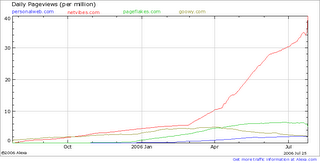Widgets and Postapp Widgetbox


Widgets are also hugely popular within social networks (with services like RockYou, Youtube and Slide). Check out almost any MySpace page and you'll see image and video widgets in prominent spots. Web services from box.net and Digg are also popular these days. As the number of webtops, social networks and their respective users increase, the increasing complexity of managing these different platforms for placement of widgets becomes strikingly apparent. Everyone from MySpace to AOL to Netvibes to Microsoft Live (and on and on) will have different requirements, policies and means for enabling 3rd party widgets.
Obviously, there is a significant opportunity here to build an integrated platform to enable widgets for wide distribution regardless of end-user platform, and it seems that PostApp/Widgetbox is leading that charge. While they are still in private beta, they have had a lot of interest from the developer community in their offering (who apparently also agree that widgets will be big). They remind me a ton of Appforge that's built a killer business enabling developers to build wireless applications across hundreds of handsets without having to deal with conforming their app to accomodate each and every handset's distinct software requirements. This is exciting stuff folks -- the personal web only promises to get bigger with the increasing value of an integrated web experience via webtops/social networks (see post below). Companies like PostApp are helping accelerate this movement even further.


